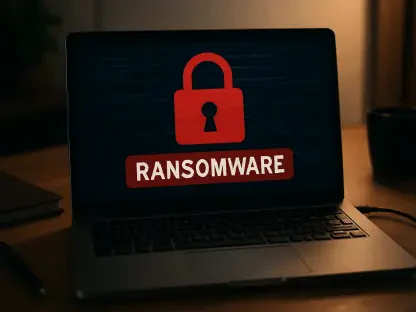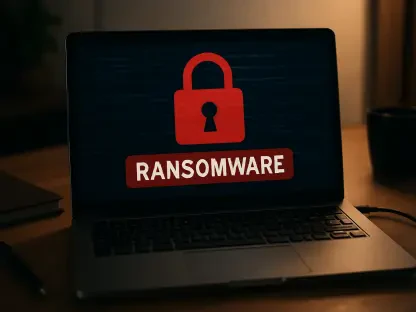In an era defined by technological advancements and digital transformation, cybersecurity threats are evolving at an unprecedented pace, challenging organizations to adapt strategically and promptly. The landscape is increasingly complex, with attackers employing sophisticated methods that exploit weaknesses in interconnected systems and vulnerabilities within software and third-party services. As these threats escalate, maintaining a proactive security posture is crucial. Organizations must be equipped to handle anticipated and unforeseen challenges, ensuring that human-managed systems and non-human identities alike are safeguarded against potential exploits. This requires understanding current vulnerabilities and a commitment to evolving monitoring and defense mechanisms to stay ahead of cyber adversaries.
Understanding Non-Human Identity Challenges
A significant blind spot in current cybersecurity strategies is the management of non-human identities (NHIs) within digital ecosystems. Unlike human credentials, NHIs encompass entities such as Service Principals, Snowflake Roles, and IAM Roles across platforms like AWS, Azure, and GCP. These identities interact with systems through secrets like API keys, tokens, and certificates, which serve as currency for machines accessing critical infrastructure. The complexity and diversity of NHIs present unique security challenges that traditional identity management systems may not fully address. As these credentials become common, robust secrets management strategies are crucial to prevent unauthorized access and potential compromises. Failure to secure NHIs can lead to vulnerabilities, making it imperative for organizations to implement rigorous security measures to monitor and control access at all levels.
The advancement of NHIs reflects the broader trend in cybersecurity, where attacks target intricate systems rather than solely focusing on human-operated technologies. The digital migration has led to a proliferation of machine-to-machine interactions, which require sophisticated security mechanisms to protect modern infrastructures effectively. Organizations must invest in advanced tools and algorithms capable of managing NHIs, ensuring secrets and access credentials are regularly rotated, validated, and secured. This proactive approach not only bolsters defenses but also enhances the resilience of ecosystems, enabling businesses to navigate cybersecurity challenges with greater confidence and efficiency.
Addressing Vulnerabilities in Command and Control Systems
Alongside the challenges posed by NHIs, vulnerabilities in command and control systems represent another critical area requiring attention. A notable example is the vulnerability identified in the Commvault Command Center, tracked as CVE-2025-34028, which boasts a high CVSS score of 9.0. Such vulnerabilities allow for arbitrary code execution by remote attackers, highlighting the potential for complete system compromise if timely updates and patches are not applied. This scenario underscores the importance of maintaining rigorous update protocols and implementing robust patch management processes to mitigate risks associated with software vulnerabilities that threaten large-scale environments.
Organizations must adopt a vigilant mindset, ensuring command and control systems are comprehensively monitored and promptly updated to counter known and emerging vulnerabilities. Cultivating a culture of cybersecurity awareness where stakeholders recognize the significance of patching and address potential flaws with urgency is essential. Regular security assessments and hands-on training can enhance understanding, reducing the likelihood of exploitation and reinforcing system integrity. Additionally, partnerships with cybersecurity experts can provide insights and methodologies that bolster defensive capabilities, empowering organizations to proactively address threats before significant breaches occur.
Implications of Supply Chain Attacks
Supply chain attacks are becoming an increasing concern in the cybersecurity landscape, reflecting a broader trend where attackers infiltrate trusted software distributions to introduce malicious code. A prominent incident involved a supply chain attack on the Ripple cryptocurrency npm package, xrpl.js, affecting five different versions by incorporating backdoors to harvest private keys. Such breaches threaten user security and exemplify the potential to gain unauthorized access to cryptocurrency wallets, emphasizing the need for vigilance in software update protocols and monitoring activities. As these threats grow more sophisticated, cultivating robust defense strategies to understand and secure supply chains is paramount.
Effective supply chain security involves scrutinizing third-party vendors and cloud services, implementing multi-layered defense mechanisms to detect and prevent unauthorized access. Organizations must prioritize regular security audits, ensure compliance with industry standards, and enforce stringent access controls and verification methods. By establishing transparent communication channels with vendors and fostering mutually beneficial security partnerships, businesses can minimize risks and enhance their cybersecurity posture. In doing so, operational efficiency and data integrity can be preserved, even amid challenges posed by external parties.
Continuous Monitoring and Identity Management
With the emergence of nuanced attack strategies, the need for continuous monitoring and comprehensive identity management systems has never been greater. The evolving threat landscape demands that organizations implement integrated frameworks capable of identifying, addressing, and validating security risks across extensive networks and systems. Recent vulnerabilities, such as the Windows NTLM exploit that allows malicious actors to leak NTLM hashes or user passwords, illustrate risks from zero-day vulnerabilities and persistent exploitation of patched flaws, emphasizing the importance of maintaining a vigilant security posture.
Proactive vulnerability assessments, advanced intrusion detection systems, and adaptive security strategies form the cornerstone of resilient defenses. Investing in cutting-edge technologies and training personnel in the latest methodologies enables organizations to respond swiftly to emerging threats, minimizing exposure and preventing compromises. Furthermore, integrating automated systems that oversee identity management processes can streamline operations while ensuring compliance and reducing the burden on human oversight. By embracing these strategies, businesses can fortify defenses and safeguard assets as the cyber threat landscape evolves.
Conclusion and Future Considerations
One major weakness in today’s cybersecurity strategies is managing non-human identities (NHIs) within digital settings. Unlike human credentials, NHIs include entities like Service Principals, Snowflake Roles, and IAM Roles across platforms such as AWS, Azure, and GCP. These entities interact with systems using secrets like API keys, tokens, and certificates, acting as a type of currency for machines accessing vital infrastructure. The complexity and diversity of NHIs create unique security issues that traditional management systems might not fully address. As NHIs become more prevalent, strong secrets management strategies are important to prevent unauthorized access and potential breaches. Failing to secure NHIs can leave organizations with significant vulnerabilities, making it essential to implement strict security measures for monitoring and controlling access.
NHIs represent a larger trend in cybersecurity, where attacks target intricate systems beyond human-operated technologies. Digital transformation has increased machine-to-machine interactions requiring sophisticated security methods for modern infrastructures. Firms must invest in advanced tools to manage NHIs by ensuring secrets and access credentials are consistently rotated, validated, and secured. Taking this proactive approach not only strengthens defenses but also improves the resilience of entire ecosystems.









